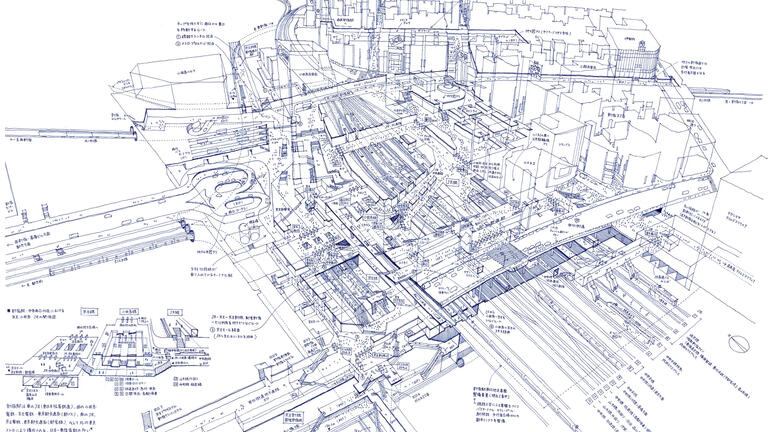Infrastructural Landscapes I: Design Histories
Part one of this seminar course is situated at the intersection of global infrastructural history and architectural world-making across the modern era.

Tomoyuki Tanaka: Dismantling of Shinjuku Station.
Part one of this seminar course is situated at the intersection of global infrastructural history and architectural world-making across the modern era. Students explore how infrastructures — understood as the material, technical and social systems of connectivity and relationality that establish the foundation for other forms of power to operate — are woven through space and sedimented in overlapping temporal layers. Together we research how infrastructures like energy grids, flood management systems, and digital communications networks facilitate place-making by connecting (or disconnecting) people and resources across vast spatial distances. While imagined and constructed by populations in historically specific spatial, political and material conditions, they endure as powerful — if often hidden — contemporary actors shaping how designers and communities respond to present-day challenges and work to bring about more sustainable futures.